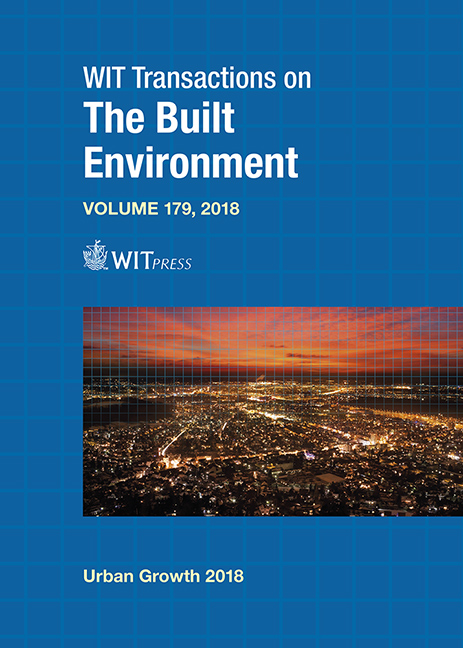CITIES UNDER PLANNING SIEGE: THE PALESTINIAN CASE
Price
Free (open access)
Transaction
Volume
179
Pages
12
Page Range
69 - 80
Published
2018
Size
598 kb
Paper DOI
10.2495/UG180071
Copyright
WIT Press
Author(s)
RASSEM KHAMAISI
Abstract
Rapid urbanization and city sprawl are a phenomenon that exists all over the world. Today, the majority of the world’s population lives in cities, and the processes and trends of city growth continue to evolve. Rapid growth leads urban planners and managers to develop various strategies, policies, mechanisms, and tools aimed at securing city sustainability and resilience. When cities are located in geopolitical conflict zones, the urban growth strategies are often layered by geopolitical strategies and the results fall far short of meeting sustainability and resilience criteria, let alone the needs of the local expanding populous. The cases examined are Palestinian cities’ expansion located in Area C. This area, determined under the Oslo II Accord, constitutes 60% of the West Bank, and is still under full Israeli occupation, including land management and spatial planning. The contradictory spatial planning imposed by the Israeli government in Area C reflects the asymmetric power structure and a sophisticated matrix of control that disrupts urbanization processes in Palestinian cities. Israel’s use of statutory restrictive planning inflicts geopolitical territorial limitations on these Palestinian cities. These limitations lead to false urbanization, assure socio-economic dependency, and generate untenable development, which affect both the regional and national Palestinian scales. Although a number of cities are referred to for purposes of illustration, the case study focus is on the Palestinian city of Qalqilya, where the author headed the City’s planning team. In this situation, Israel, as the occupier, uses building permits as an effective instrument to hold urban development under a state of siege. The paper will discuss the notion of planning siege and will shed light on Palestinian cities.
Keywords
urban planning, urbanization, Palestinians, Israelis, West Bank occupation, Qalqilya





